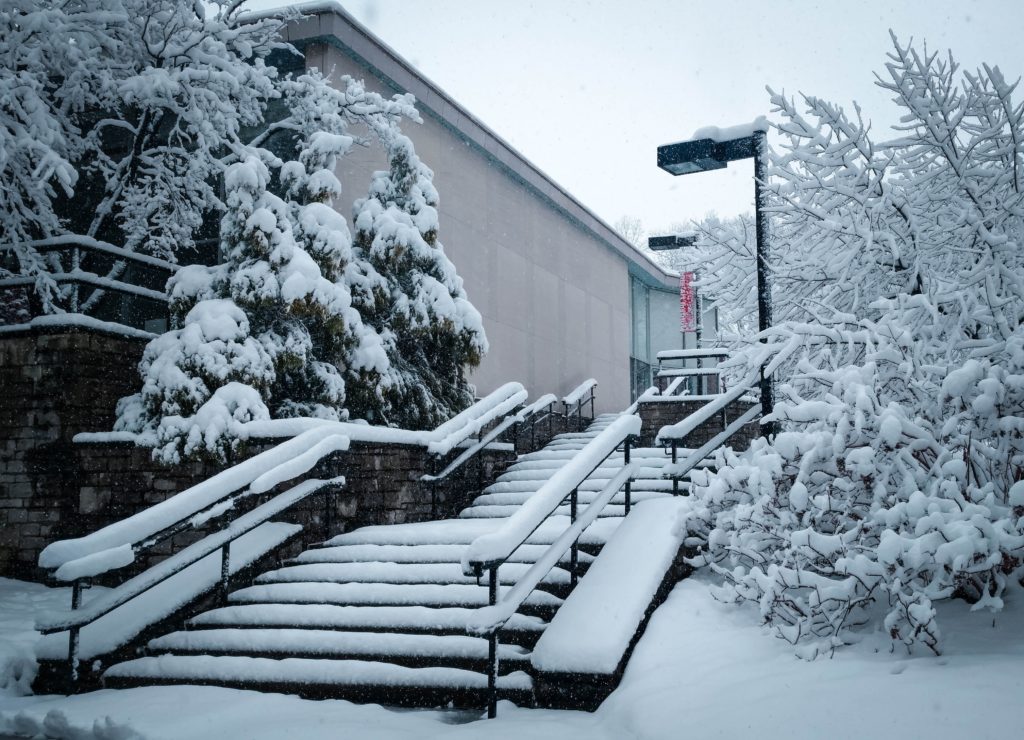
Gab Learns – Real Winter
We’re finally heading out of winter. See you later dreary weather, winter bugs and sickness and hello allergy season! So, let’s dive into winter – real winter, and what designing for a properly cold climate looks like – comparing New Zealand to Canada (because that’s where Peter’s from)!
Our humble Canadian Peter thought Queenstown was balmy on his recent trip down south. There was some snow – a small amount on the mountain, and while the temperatures hovered around the zero-degree mark, it wasn’t the real winter environment he is used to in parts of Canada. Some parts of Canada (Victoria and Vancouver) are very similar to the climate in Auckland, but as you start moving away from the ocean to places like Calgary or Winnipeg it gets freezing – we’re talking -40 or -45 degrees in the winter and then huge swings in the summer to +40 or +45 degrees. So, the extremes are very different, which means we need to consider this when we are designing and building our homes.
Before getting to homes, though, there are extra things such as teams or fleets of snow ploughs, salt machines, and large shovel trucks to scoop snow up and away. In fact, there is so much snow that in places where they need to get rid of it, they transport it to industrial zones and pile the snow up and leave it to melt – which can take a while. Work and travel doesn’t stop due to the weather.
When designing and building, thermal movement must be considered when looking at materials, take aluminum for example – in the cold this material expands and contracts, which must be factored in the design to allow for some movement. Freeze/thaw is also a big concern in Canada, but less likely seen in NZ. What is freeze/thaw? An example is we know concrete is not fully waterproof, it absorbs water, so if you’re in a warm place like Auckland it absorbs the water and then releases it, you might even see some green algae growing, however in parts of Canada this doesn’t happen because the winter is so cold. But what you will see is freeze thaw, which is when water gets into the concrete, freezes and then expands causing the concrete to crack or spall off. It becomes a flow on effect, because the more cracks that are presented in the concrete the more water can get in to freeze and continue to erode the concrete.
What is the main difference/s when building or designing in NZ vs Canada?
To be honest, there’s not a lot. If designing for Vancouver or Victoria, the home could be put in NZ and perform very similarly. In both NZ and Canada timber is used a lot in building, so the types of build are fairly similar, however one difference is in Canada the timber frames usually get an OSB board (oriented strand board) on the outside, whereas in NZ they staple a wall underlay onto the studs. Also, in parts Canada there are a lot of brick houses, whereas in NZ they’re not seen as much.
In terms of windows – in Canada windows will be uPVC (cheapest window) which is plastic and has been the standard since the 90’s (or potentially even the 80’s) – they work well in the cold and don’t transfer a lot of heat. However, these are not the standard in NZ – typically we see aluminum or wooden frame. Bug screens are also in the standard in Canada, but we don’t see them in NZ. All windows in Canada are fitted with bug screens to stop bugs going inside – genius!
Most newer houses in Canada have ducted heating with a furnace in the basement which burns natural gas or rock gas, and there are ducts around the whole house which allows you to run heating all winter long. The main difference here that the house stays at a constant temperature year-round. It also means you can leave the windows closed all winter to stay warm, and because it’s so cold the infiltrating air gets very dry which means you could dry your clothes inside – something that if you did in NZ, you’d certainly be adding a lot of moisture to the air which would then have to be removed.
Salt is very important in the cold parts of Canada. Roads are salted to melt the water which works down to approx. -10 (below that it’s too cold and doesn’t work), salt mixes with the water and changes the melting point, meaning it melts at -6 instead of zero degrees. However, you do have to be mindful with the salt as it promotes corrosion (just like living by the sea) and if you have lots of salt on concrete it will eventually start to eat away at it, including rusting any steel that might be in the concrete too.
What are the main things that can go wrong when building in a cold climate?
The exact same things that we experience in NZ ie. mould growth, air draughts etc happen in Canada, except it’s more severe due to the temperature differences. Freeze thaw however is going to do a lot more damage to a house or property, which NZ doesn’t typically see. A parking garage in Canada must be very waterproof because if not the effect can be a lot of structural damage! If water goes in and starts breaking / cracking, it creates a pathway for more water to go in and the crack becomes bigger and bigger – on the flip side in NZ it’s very much the ‘she’ll be right’ attitude as the effects isn’t as damaging. This is also a reason why the building code hasn’t changed as quickly in NZ because it’s not such a big worry – whereas in Canada damage can be seen within a year.
And because we all love a fun fact – here are some to finish off learning about Real Winter:
- Sometimes there is so much snow people must skate to work or take a snowmobile!
- When it’s -40 outside you can get a boiling pot of water, throw it in the air, and it immediately turns into snow!
- Once you get below -25 breathing in air gives you brain freeze, it’s that cold that your brain just freezes!
- If you leave the house with wet hair, your hair will grow icicles!




